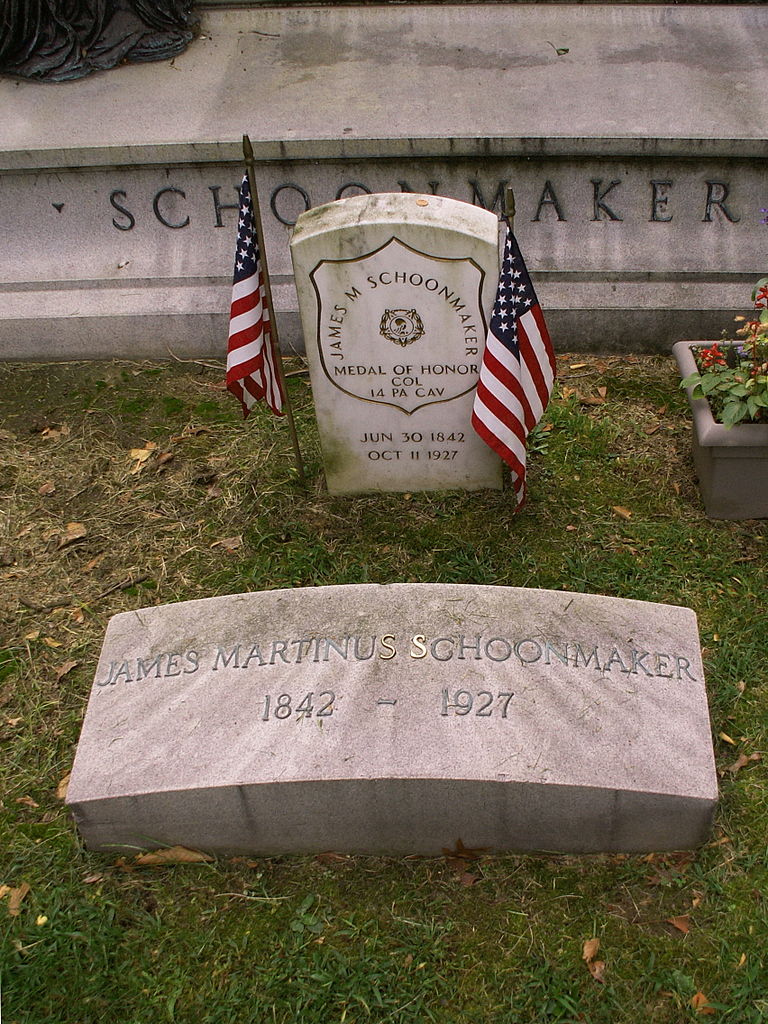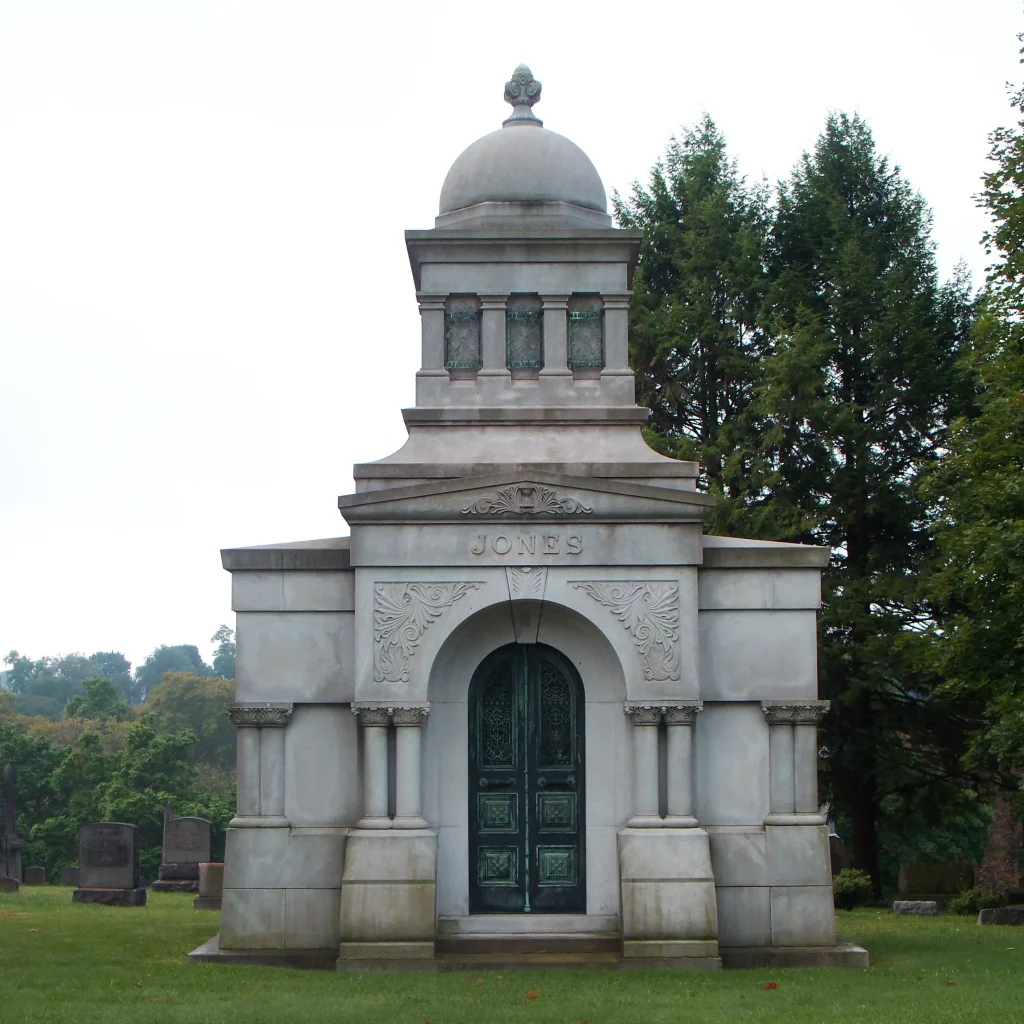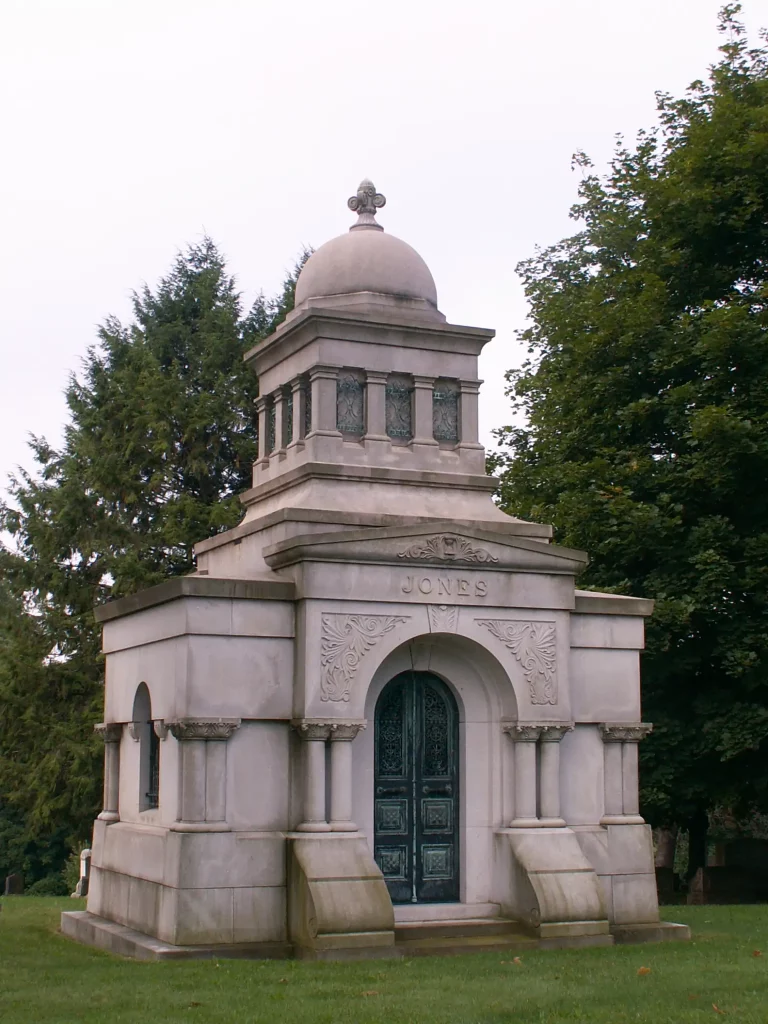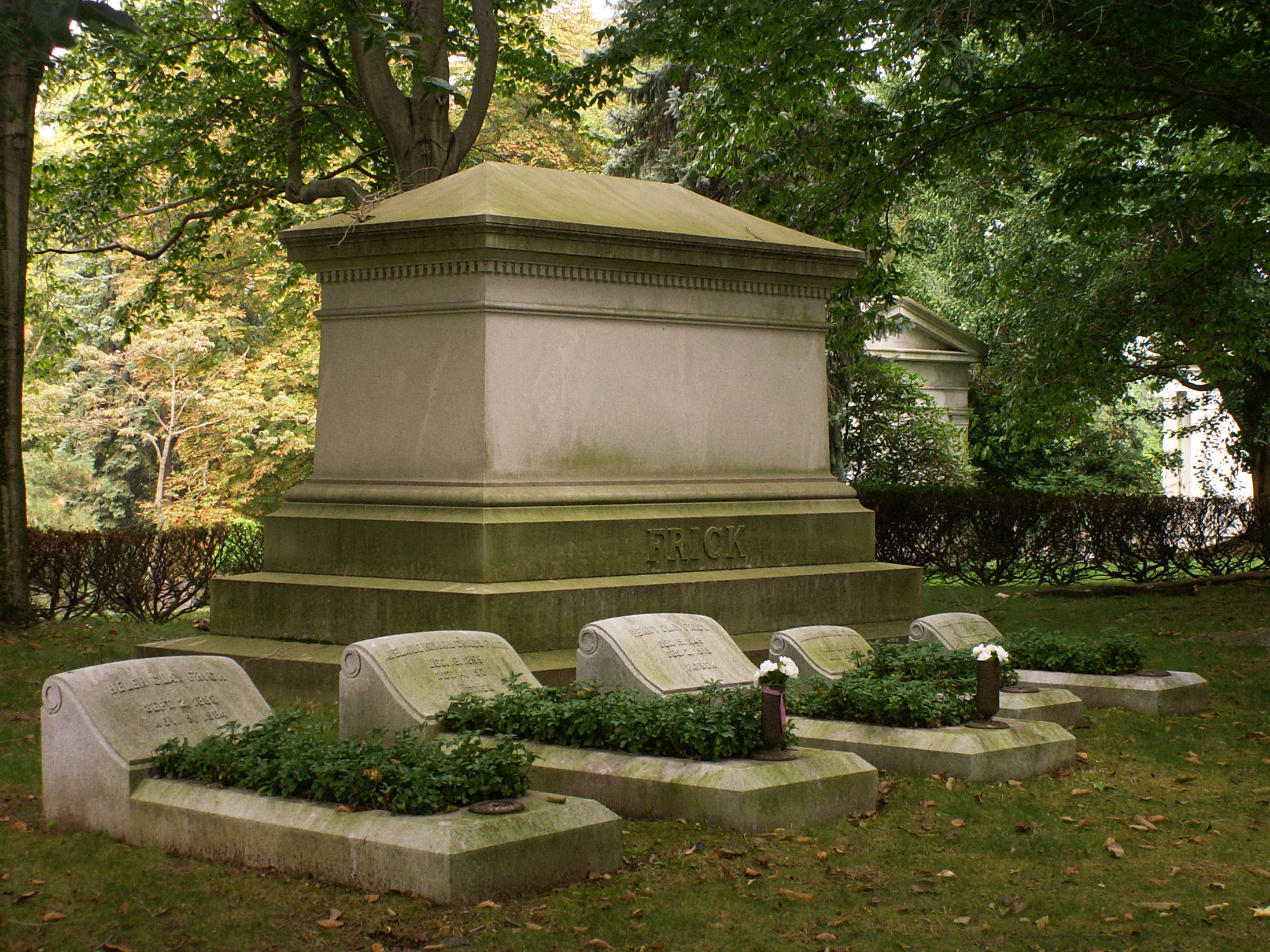This fine polished-granite mausoleum announces his name to anyone who visits this sheltered corner of the cemetery; but D. L. Clark’s real monument is the Clark Bar, which trumpets his name to anyone who visits a convenience-store cash register. Polished granite was expensive, but a very good choice for Pittsburgh, since the grime of industry could be wiped off with little labor and no damage to the stone.
-
David L. Clark Mausoleum, Homewood Cemetery
-
Clarence Burleigh Mausoleum, Homewood Cemetery
If this mausoleum looks a bit like a miniature courthouse, then Mr. Burleigh should feel right at home: he earned his greatest fame, or infamy, as the Allegheny County district attorney who prosecuted the Homestead strikers in 1892. He was later Pittsburgh city solicitor for many years. You may ask how a man who devoted his life to public service gained the kind of wealth evident in this splendid Ionic temple; but if you do ask it, it is because you are not very familiar with Pittsburgh.
-
Schoonmaker Monument, Homewood Cemetery

A beautiful bronze angel lays a well-deserved palm on the monument to James Martinus Schoonmaker, who as a 22-year-old colonel in the Union Army led a charge that, years later, earned him the Medal of Honor. Of course, gallantry in combat does not bring in the sort of money that buys extraordinary works of art for one’s grave. That came from the coke industry and the Pittsburgh & Lake Erie Railroad.



-
Jones Mausoleum, Homewood Cemetery

What shall we call this style? Father Pitt has heard it called “Byzantine,” but that does not seem right to him; it seems more Romanesque, but with an unusual domed cupola. The cupola adds impressive height, and in spite of the difficulty he had assigning the structure to a particular style, old Pa Pitt thinks it is a pleasing and harmonious design.

-
Frick Family Plot, Homewood Cemetery

One might expect Henry Clay Frick to rest in a huge mausoleum, but in fact when he went to see Mr. Carnegie in hell he was buried in a modest grave overlooked by a large but very plain classical monument. The rest of his family is also buried here—even Helen and Childs, who refused to speak to each other after the reading of their father’s will, are buried in the same plot, although almost as far apart as possible.





The graves in this plot all match, except for the monument to Childs and his wife, which is entirely different. All the matching graves have places for flower urns, and when Father Pitt visited, someone had left artificial roses for Henry and Adelaide.




